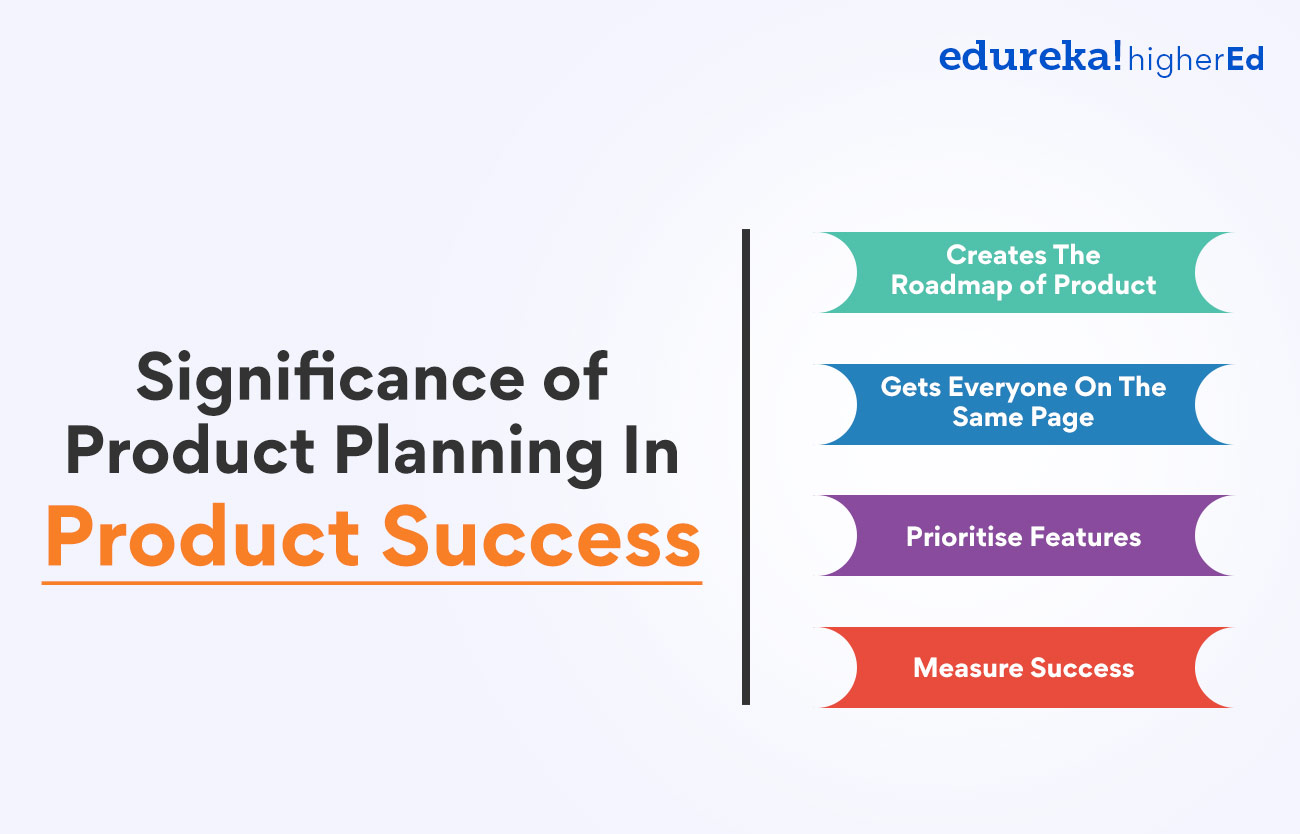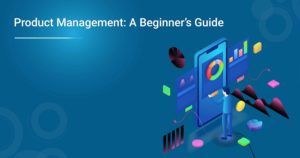How can you build a product without efficient planning? Indeed lack of appropriate planning can plunge the growth of your product. Product planning is an indispensable fragment of product management. It allows product managers to create a roadmap for their product and ensure that all stakeholders are on the same page.
Product planning is done by considering the market opportunity, customer needs, and technical feasibility. This blog post will discuss product planning in more detail to better understand how to create a product plan that sets the path for product success.
Significance of Product Planning In Product Success
Product planning is the essence of product launch and success as it allows you to take a step back and look at the bigger picture. It helps you prioritise what features to build and when to create them. Additionally, it also allows you to track progress and measure success.
Creates The Roadmap of the Product
A product plan is typically a product roadmap that steers the entire launch plan. The roadmap outlines the features you want to build and how they fit into the overall product strategy.
Gets Everyone On The Same Page
It can help get everyone on the same page about what needs to be built and when. This is especially important in a product development team with many stakeholders involved.
Prioritise Features
Planning allows you to prioritise features based on business objectives and user needs. This helps ensure that the product is built with the right features in the correct order that reaches the target audience.
Measure Success
Excellent planning can help measure success by tracking progress against the product roadmap. This enables you to detect what is working in favour of your product and what needs to be improved.
Without an excellent product plan in place, product development can be a chaotic and unorganised process. The product planning process is the first step to creating a successful product.
 If you’re starting a new product, or even if you’re just trying to improve an existing one, product planning and development are essential. By developing a plan for your product, you can save yourself a lot of time and effort in the long run. And, as they say, “a product well planned is a product half built.”
If you’re starting a new product, or even if you’re just trying to improve an existing one, product planning and development are essential. By developing a plan for your product, you can save yourself a lot of time and effort in the long run. And, as they say, “a product well planned is a product half built.”
Also Read: Brand Management v/s Product Management: Know Key Differences
Difference Between Product Planning And Go-To-Market Strategy
A product plan is a process of creating a product roadmap that outlines a product’s features, functions, and timeline. Product planning often includes market analysis, product development, and product management.
The Go-To-Market strategy is the process of planning and executing a product launch. The Go-To-Market strategy often includes product planning and encompasses sales, marketing, and channel strategy.
A product plan is a critical part of the Go-To-Market strategy, but the two terms are not interchangeable. Product planning is focused on the product itself, while go-to-market strategy is focused on how the product will be presented in the market and sold.
Product Planning Is A Continuous Process
Product planning is a continuous process that should be revisited and tweaked according to the requirements. This product roadmap is a living document that will change as the product evolves. A product manager must be able to adapt to changes and pivot when necessary.
The product planning process always starts with an idea. This can come from anywhere, but the product development team typically generates it. After the idea is developed, it must be vetted to see if it’s viable. This is done by creating a product requirements document (PRD). The PRD outlines the problem that the product will solve, the target market, the proposed solution, and much more.
Once the PRD has been approved, it’s time to start building the product. It is the time when the product roadmap comes into action. The product roadmap is a high-level view of the product that outlines the features and timeline for development. It’s important to note that the product roadmap is not set in stone and can be changed as needed.
As the product is being developed, the product manager must continue communicating with all stakeholders. This includes the development team, sales team, marketing team, and customers. The product manager is responsible for making sure everyone is aware of the product’s evolution and that the product is being developed according to the product roadmap.
Once the product has been developed and released, the product planning process starts all over again. This is because product planning is a continuous process that can never be stopped but only refined as per the requirements.
What Are The Different Phases Of Product Planning?
It is the process of creating a plan for a product. This plan includes the product’s goals, market research, target audience, and more. The different phases of a product plan are as follows:

Goal Setting
In this phase, the product team sets the goals for the product. These goals can be anything from augmenting sales to improving customer satisfaction. The goals must be set in advance to ensure that the product planning process is focused and on track.
The goal-setting process entails:
- Analysing the product’s current situation
- Setting objectives for the product
- Developing a plan to achieve these objectives
Once you have analysed all these factors, you can set your product goals. Make sure to keep these goals realistic and achievable so that your team can stay motivated throughout the planning process.
Market Research
After the goals have been set, the next phase is to conduct market research. This research helps the team understand the target audience’s needs and what they are looking for in a product. It also helps to identify any potential competitors.
Market research is imperative to planning as it provides insights that help to shape the product goals and objectives. The research should be conducted at the beginning of the planning process to guide the team throughout.
Product Concept Development
The product concept is the foundation of the product. It is what the product is and what it does. The product concept must be well-developed before any other planning can take place.
To develop a product concept, you need to:
- Understand the target audience
- Research the competition
- Determine what the product will do
- Come up with a unique selling proposition
Once you have a clear product concept, you can move on to the next product planning phase.
Also Read: What Are The Reasons of Variations in Product? Causes & Reasons
Creating the Product Workflow
The product workflow is a high-level overview of the product plan. It includes all the goals, milestones, and deliverables for the product. The roadmap keeps track of the product development process and ensures everyone is on the same page.
Creating a product roadmap entails:
- setting product goals
- identifying milestones
- outlining deliverables
- creating a timeline
The product workflow is an essential part of the product plan as it provides a clear synopsis of what must be done and when. Keeping the workflow updated as the planning process evolves is essential.
Minimum Viable Product Development
The Minimum Viable Product (MVP) is the product with the essential features. It is used to test the product concept with the target audience. The MVP should be developed before any other product planning is done.
To develop an MVP, you need to:
- Determine the product’s core features
- Simplify the product
- Focus on the user experience
The MVP is a crucial part of product planning as it allows you to test the product concept with minimal risk. It is vital to keep the MVP simple, so it can be easily tested and improved upon.
Product Launch
The product launch is the final phase of product planning. This is when the product is made available to the public. The product launch should be well-planned and executed to ensure that the product is successful.
To plan a successful product launch, you need to:
- Create a marketing plan
- Develop a go-to-market strategy
- Create a product launch checklist
The product launch is the most critical part of product planning. It is essential to plan and execute the launch carefully to ensure the product is successful.
Product Lifecycle Management
Product Lifecycle Management (PLM) is the process of managing the product from inception to retirement. PLM includes all aspects of a product plan, development, and launch. It is crucial to have a clear PLM strategy in place to ensure that the product is successful.
To develop a PLM strategy, you need to:
- Understand the product lifecycle
- Identify the critical stages of product development
- Determine the resources required at each stage
PLM ensures that all aspects of the product are managed effectively so that the product is successful.
If you also want to learn the nitty-gritty of product planning, get a closer look at our Advanced Executive Certificate in Product Management which gives you in-depth knowledge of product management.
Smart Tips To Formulate A Successful Product Plan
Product planning is essential to any business, yet it’s often overlooked or poorly executed. A product plan involves figuring out what product or service to offer, how to produce and market it, and what price point to set. It’s a critical step in bringing any product or service to market, yet many businesses don’t give it the attention it deserves.
Here are a few key things that must be kept in mind when product planning:
First, you need to understand your target market. Who are you selling to? What problems and concerns does your product address? What are their pain points? Doing extensive market research is essential to developing a successful product plan. This will allow you to be ready for product development and marketing.
Next, you need to create a product roadmap. This document outlines the steps to bring your product or service to market. It should include timelines, milestones, and deliverables. Creating a product roadmap will help keep you on track and ensure that everyone involved in the product development process is on the same page.
Make use of a prioritisation framework to help you focus on the right product features. This will ensure that your product is launched with the most important elements first and that subsequent releases include additional features that align with customer demand.
Finally, you must set a price point for your product or service. This can be tricky, as you want to ensure you are not pricing yourself out of the market. Simultaneously, you don’t desire to undervalue your product or service. Researching and understanding your target market’s purchasing power will help you set a competitive price point.
What Makes A Product Plan Successful?
A successful product plan must be clear, concise, and comprehensible. It should outline the product’s features, benefits, and objectives. The product plan should also include a timeline of when the product will be launched and how it will be marketed.

Creating a product plan is the first step in bringing a new product to market. It is essential to clearly understand what you want to achieve with your product before you begin product planning. If you are not sure what your product objectives are, ask yourself these questions:
- What problem does my product solve?
- Who is my target customer?
- What features should I incorporate to make my product successful?
- When do I want to launch my product?
- How much money do I need to invest in my development?
Once you have found answers to these questions, you can begin to develop your product plan. Begin by creating a timeline of when you want to achieve each objective. Then, start fleshing out the details of your product, including what features it will include and how it will be marketed. Be sure to have a budget for your product development and marketing efforts.
If you want to ensure that your product plan is successful, it is vital to get feedback from others. Ask friends, family, and potential customers what your product idea thinks. Use this feedback to fine-tune your product plan before you begin investing time and money into developing your product.
Creating a product plan is the first step in bringing a new product to market. By taking the time to develop a well-thought-out product plan, you can increase your chances of success and avoid costly mistakes. If you need help creating a product plan, consider working with a product planning and development consultant.
For more information regarding product development and management, take a peek at our Advanced Executive Certificate in Product Management which covers product strategy, product road mapping, product development process, and more.
More Information:
Product Management Frameworks Every PM Must Know
11 Crucial Product Management Metrics and KPIs
What is a Product? Meaning, examples, definition, and features






_1668670867.jpg)
_1668670867.jpg)























